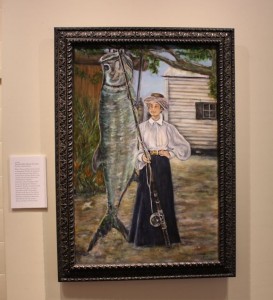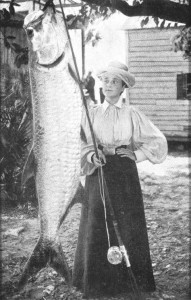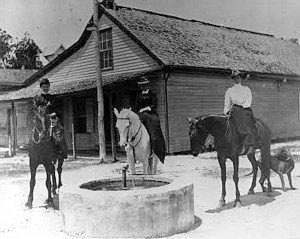Mary Beth Barbato
Genres: Portraiture, Realism
Her Art:
Mary Beth Barbato received her BAE from Herron School of Art at Indiana University/Purdue University in Indianapolis, Indiana. After many years of teaching Elementary Art in Indiana and Ohio, she once more embraced the “artist within” and today experiments in different mediums and techniques in her home studio in sunny Fort Myers. “While I have traditionally painted  landscapes and seascapes, as well as portraits in pastel or graphite, I am now incorporating weaving techniques into my artwork, using recycled canvas, hand-painted papers, collage and printmaking methods,” says Mary Beth of her body of work to date. Over the years, I have participated in many juried shows and exhibits throughout the country and even managed to take home a ribbon or two.”
landscapes and seascapes, as well as portraits in pastel or graphite, I am now incorporating weaving techniques into my artwork, using recycled canvas, hand-painted papers, collage and printmaking methods,” says Mary Beth of her body of work to date. Over the years, I have participated in many juried shows and exhibits throughout the country and even managed to take home a ribbon or two.”
Portrait of Florida Abbie Shultz Heitman for Founding Females portrait show
 For the Fort Myers Founding Females portrait show, Mary Beth rendered a portrait of Florida Abbie Shultz Heitman. The daughter of Punta Rassa cable operator and Tarpon House proprietor George Schultz, Florida married developer, banker and general store owner Harvie Heitman.
For the Fort Myers Founding Females portrait show, Mary Beth rendered a portrait of Florida Abbie Shultz Heitman. The daughter of Punta Rassa cable operator and Tarpon House proprietor George Schultz, Florida married developer, banker and general store owner Harvie Heitman.
A Syracuse, New York transplant, mother of three and grandmother of five, Barbato chose Shultz-Heitman because she was a woman possessed of strong character and lofty goals. “Don’t be fooled by her small stature,” Mary Beth cautions. “She was never one to be  intimidated and took great pride in her accomplishments. Just look at that inkling of a smirk on her lips.”
intimidated and took great pride in her accomplishments. Just look at that inkling of a smirk on her lips.”
Florida is pictured in the portrait with a 185-pound tarpon that she had just hooked. It was her father’s hotel that introduced tarpon fishing to the angling world after one of the hotel’s guests used a rod and reel in 1885 to hook a 95-pound silver king instead of the traditional hook and chain or harpoon that had been used in the past. With the announcement of that feat, wealthy businessmen and celebs from New York, Boston and Chicago flocked to Punta Rassa to try their hand at tarpon fishing. Thomas Edison was one of them; Standard Oil President and CEO Ambrose McGregor and his wife, Tootie, were two others.
 To hear male historians tell the tale, when wealthy Tarpon House patrons wanted to take a break from fishing, they’d go up river to check out the town and maybe do some hunting, bass fishing or gator gigging. Invariably, they would stop at a store run by a young man from North Carolina by the name of Harvie Heitman. Heitman is typically described as a visionary, stocking high-end fishing tackle and camping equipment along with the kind of
To hear male historians tell the tale, when wealthy Tarpon House patrons wanted to take a break from fishing, they’d go up river to check out the town and maybe do some hunting, bass fishing or gator gigging. Invariably, they would stop at a store run by a young man from North Carolina by the name of Harvie Heitman. Heitman is typically described as a visionary, stocking high-end fishing tackle and camping equipment along with the kind of  provisions you’d expect to find in a general store. But what these accounts all leave out is George’s daughter, Florida, who was clearly one of the reasons why dad sent wealthy patrons to Harvie’s store at Jackson and First Street and who undoubtedly gave her husband advice on the type of fishing tackle and camping equipment that would be of interest to the folks who stayed at her father’s hotel.
provisions you’d expect to find in a general store. But what these accounts all leave out is George’s daughter, Florida, who was clearly one of the reasons why dad sent wealthy patrons to Harvie’s store at Jackson and First Street and who undoubtedly gave her husband advice on the type of fishing tackle and camping equipment that would be of interest to the folks who stayed at her father’s hotel.















 Tom Hall is both an amateur artist and aspiring novelist who writes art quest thrillers. He is in the final stages of completing his debut novel titled "Art Detective," a story that fictionalizes the discovery of the fabled billion-dollar Impressionist collection of Parisian art dealer Josse Bernheim-Jeune, thought by many to have perished during World War II when the collection's hiding place, Castle de Rastignac in southern France, was destroyed by the Wehrmacht in reprisal for attacks made by members of the Resistance operating in the area. A former tax attorney, Tom holds a bachelor's degree as well as both a juris doctorate and masters of laws in taxation from the University of Florida. Tom lives in Estero, Florida with his fiancee, Connie, and their four cats.
Tom Hall is both an amateur artist and aspiring novelist who writes art quest thrillers. He is in the final stages of completing his debut novel titled "Art Detective," a story that fictionalizes the discovery of the fabled billion-dollar Impressionist collection of Parisian art dealer Josse Bernheim-Jeune, thought by many to have perished during World War II when the collection's hiding place, Castle de Rastignac in southern France, was destroyed by the Wehrmacht in reprisal for attacks made by members of the Resistance operating in the area. A former tax attorney, Tom holds a bachelor's degree as well as both a juris doctorate and masters of laws in taxation from the University of Florida. Tom lives in Estero, Florida with his fiancee, Connie, and their four cats.